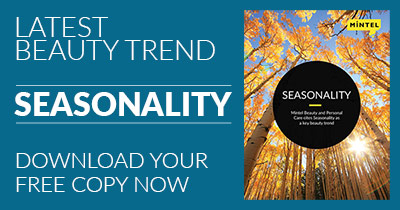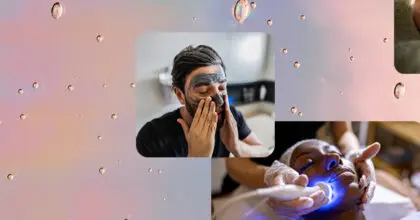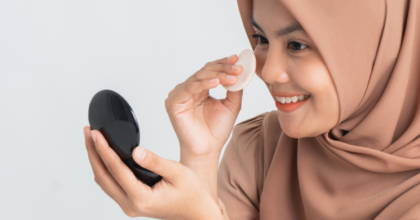MINTEL BEAUTY AND PERSONAL CARE ANNOUNCES SEASONALITY AS A KEY BEAUTY TREND
Mintel Beauty & Personal Care (BPC) has announced Seasonality as a key beauty trend. Whilst the calendar often shifts diets towards seasonal produce, Mintel’s research has found that the seasons too are now defining beauty regimens around the world.
 Rather than simply using the change of seasons as a reason to introduce colour stories or scents, beauty manufacturers are increasingly introducing innovative products that offer defence against the cosmetic and emotional effects of specific weather conditions.
Rather than simply using the change of seasons as a reason to introduce colour stories or scents, beauty manufacturers are increasingly introducing innovative products that offer defence against the cosmetic and emotional effects of specific weather conditions.
Indeed, the beauty landscape has steadily evolved over recent years in response to the demands of the Seasonality trend, with a considerable growth in the number of launches of products over the past three years. Seasonal products accounted for as many as 11.1% of all beauty and personal care launches in 2014, up from 9.8% in 2011. What’s more, seasonal facial skincare launches rose from 0.5% of global launches in 2009 to 1.2% in 2014.
Jane Henderson, Global President of Mintel’s Beauty and Personal Care Division at Mintel, said:
“Our research shows that consumers are becoming increasingly aware of – and concerned about – how changes in the environment are affecting the condition of their skin and hair. Already, beauty manufacturers have started to go beyond taking simple seasonal approaches geared to public holidays or gifting occasions and instead are taking on the elements within their product innovation.”
Highlighting a gap in the market, Mintel’s exclusive consumer research reveals the strong global consumer demand for skincare launches that tap into changing seasons. Some four in five (80%) German consumers claim their facial skin needs change throughout the year and almost half (48%) of Chinese female facial skincare users choose products from different brands in different seasons.
Vivienne Rudd, Director of Insight, Beauty and Personal Care at Mintel, said:
“A new generation of winter care products offer additional care and hydration for the skin. These tend to target dry or very dry skin and mention cold, dry weather. However, the future will see the arrival of boosters that address cold, damp weather as well as the extremes of dryness. Meanwhile, extreme summer conditions are calling for products which protect the skin from heat and humidity as well as UV damage, and which build up resilience against the forthcoming autumnal changes. By creating these seasonal options, brands have a chance of building year-round loyalty.”
Furthermore, there are also strong demands for haircare launches that tap into the Seasonality trend, with three in 10 (30%) Brazilian haircare consumers claiming they would pay more for products to protect their hair from sun damage.
“Today, we have a number of generic seasonal skincare and haircare launches, but in the future we expect a new generation of products targeting specific skin and hair issues. These product introductions have the opportunity to address concerns that have arisen due to climatic conditions and seasonal stresses, varying their textures, building up seasonal ingredient profiles and selecting appropriate fragrance blends.” Vivienne continues.
The Seasonality trend also looks set to shape the future of the personal care market. Currently, nearly half (48%) of US suncare users express interest in gradual tanning body washes and 44% of US women who use soap, bath and shower products look for extra moisturisers in the winter months. Furthermore, 81% of US men using soap, bath and shower products would be interested in adding deodorising properties and 59% would be interested in bodywash and soap with SPF.
“As well as appealing to changes in consumer cosmetic needs, there is also scope for products that appeal to the altered emotional needs of consumers as the seasons change. Conditions such as Seasonal Affective Disorder and the Winter Blues are now widely understood by consumers and the time is ripe for innovations that appeal to these ailments as well as products that appeal to people’s optimism during the warm weather.” Vivienne continues.
Indeed, over a third (36%) of UK consumers said they felt less positive during the long, cold winter of 2012/2013 and 23% said the return of warm weather would prompt them to treat themselves to a new look.
In particular, Mintel’s research shows that this could hold real potential for fragrance manufacturers. Today, two-thirds (67%) of US fragrance users would be interested in scents that influence their mood or relieve stress and almost a quarter (23%) would pay more for them.
“Seasonal approaches in beauty also extend to ingredients harvested at the most opportune time, while seasonal boosters and complementary teas and tonics will join mainstream collections. The seasonal issue will have an impact on global launch programmes. With the seasons arriving in different geographic zones at different times, colour cosmetics brands will have to take a more time-sensitive approach to their seasonal colour stories, while skincare and haircare brands may have to stagger their launch programmes more accurately. Beauty brands will also take cues from localised seasons such as the Monsoon in South East Asia to launch relevant and eye catching products.” concludes Vivienne.
-
 Discover your next big breakthroughGet smart fast with our exclusive market research reports, delivering the latest data, innovation, trends and strategic recommendations....View Reports
Discover your next big breakthroughGet smart fast with our exclusive market research reports, delivering the latest data, innovation, trends and strategic recommendations....View Reports -
2026 Global PredictionsOur Predictions go beyond traditional trend analysis. Download to get the predictive intelligence and strategic framework to shape the future of your industry in 2026 and beyond. ...Download now
-
Are you after more tailored solutions to help drive Consumer Demand, Market Expansion or Innovation Strategy?Ask for a customised strategic solution from Mintel Consulting today....Find out more






























